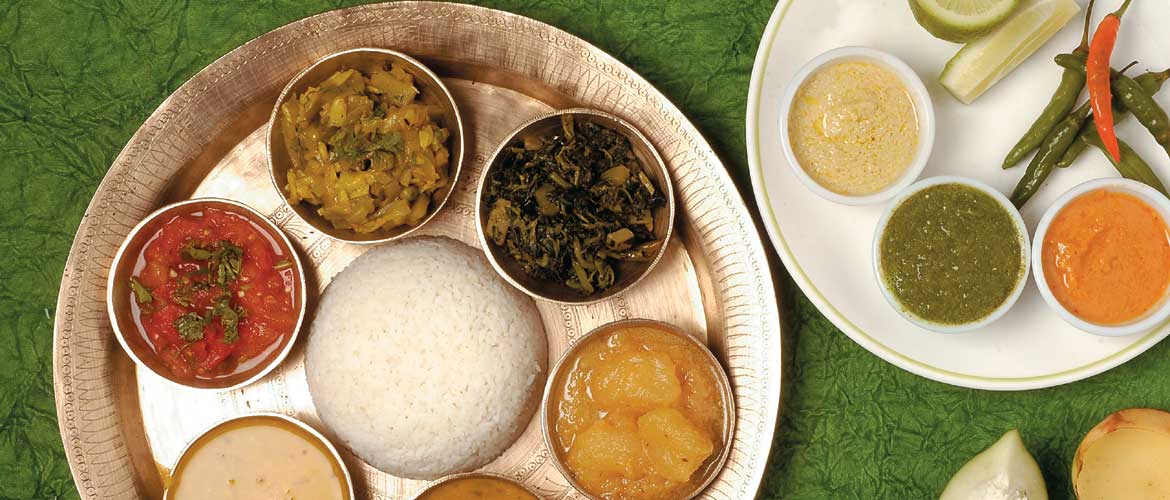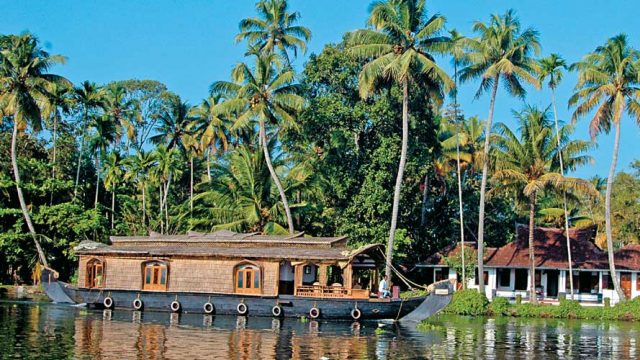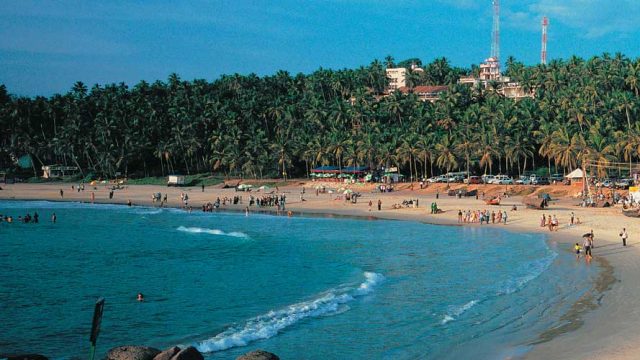Gone are the days when a mention of Northeastern cuisine, would either draw a blank
Tribal in origin, the beauty of the cuisine here is that while there are regional specialties, there are huge similarities as well in the styles of cooking, curing and use of ingredients. Take for instance pork – known as the chicken of the Northeast because of its generous use and liking. It’s natural to find a pork dish or even a seemingly vegetarian dish made of pork – meat, blood or soup – in every state here. Or the wide use of fermentation: be it for making their key flavourant akhuni (fermented soyabean) or zu and chauk (drinks made of fermented rice).

Healthier methods of cooking such as poaching and boiling are employed to cook food while local herbs and spices like ginger, onion, chillies, coriander and cumin are used to impart flavour. Take the case of the wild fern. Widely grown, it is often wok-tossed and seasoned with a pinch of salt and asafoetida and served with jadoh or koat pitha. But for every fern dish, there is the spicy Mizo arsa buhchiar (chicken dish), flavourful Naga pork curry and thupka from Arunachal Pradesh that can pander to the taste buds of those who crave fiery dishes. This variety in dishes makes traversing the gour-met corridors (which are mostly the old market streets and shacks run by ladies) of these eight states such a soulful experience.
SIKKIM
There was a time when Sikkim’s food culture was summed up with just two dishes – momos and thupka: one a delectable brother of the internationally famous dim-sum, the other a delicious broth rivalling the Chinese noodle soup. But a visit to this state of mountains and monasteries tells a different story. Like most Northeastern states, the staple here is soya bean. They have it in every form: fried, roasted, toasted, made into a paste, made into a soup and even fermented. In fact, the kinema, which is essentially fermented soya bean with a unique flavour, is eaten with rice and forms the basis of some of the dishes that are consumed in abundance in Sikkim.

Aside from meat and local produce, some of the popular ingredients used in everyday fare here include dri butter or gehu (yak ghee), chhurpi (fermented cow milk cheese), bamboo shoots and chillies. The food culture here has been heavily influenced by Nepal and other Northeastern states.
Saelroti
This is a doughnut-shape fried bread that is served with potato/ meat curry and tea.
Sha Balep
Similar to a momo in ingredients and samosa in shape, sha balep is a stuffed, deep-fried pie that is served with a spicy stew or dal and is a popular breakfast.
Butter tea
Made of dri (yak) butter, tea leaves and salt, this savoury beverage goes perfectly with tspama, sweet bun made of roasted barley.

Chatamari
A Newari food item that looks like a pizza, albeit with a slight difference as the base is made of rice flour.
Gorkhali Lamb
Much like the Nepalese lamb curry, the meat pieces in this dish are grilled and sealed with a chilli mixture before being added to the gravy.
Tomba
A home-brewed beer made of fermented millet with a few grains of rice thrown in for flavour. Milder than chaang, tomba is served in a wooden or bamboo mug and sipped through a straw. Occasionally, the mug is topped up with warm water and once the drink settles it tastes like milky beer.

ASSAM
The teacup of India, Assam is the gateway to the Northeast. The food of lower Assam is strongly influenced by Bengali, Oriya and Thai cuisines, quite possibly because invaders (including the British), traders and wanderers from surrounding areas were able to access these parts with relative ease. Upper Assam, where the food is mostly tribal, stands apart with its relatively subtle flavours and use of exotic wild herbs such as lime (gol nemu), lemon (kagji nemu) and the sweet smell of joha rice. In comparison, the food in lower Assam is distinguishable by the use of mustard – oil and paste – paanch phoran, tomatoes, potatoes and a lot of spinach. In fact, a traditional meal in Assam begins with a khar, a pulpy vegetable curry made with the alkaline filtrate of ash obtained from burning the dried fiber of a plantain tree or dried banana peels, and ends with a tenga, a sour curry, made with dal or fish using elephant apple or wild sour spinach as souring agent such as the masor tenga (tangy fish curry).

Koldil Paro Manghor Jalukia
While fish is a staple food item, Assamese are also fond of fowl meat. This particular dish is made with banana flower tossed with potatoes and pigeon meat. A traditional dish, it is made on special occasions.
Chira
A healthy breakfast of rice flakes (especially made of joha), jaggery and yogurt, chira is much like the Oriya chuda-dohi, but has a dif-ferent flavour because of the rice used. Since this dish is extremely filling, it was once given to traders and soldiers before they set out on long journeys.
Haanh Aaru Maha
What dal ghost is for Lucknow and Rampur, haanh aaru maha is for Assam. A tasteful dish made of lentils and duck, it’s a masterpiece of subtle cooking.

Koldilor Bhaaji
The star of this dish is banana flower, which is accompanied by certain vegetables such as potato. The mix of spices used in koldilor bhaaji will leave a lasting impres-sion on your taste buds.
Bhapot Diya Pitha
Those with a sweet tooth will love these steamed rice pancakes that have been sweetened with coconut and jaggery – a favourite during the festival of Bihu.
ARUNACHAL PRADESH
With 26 major tribes and over a 100 sub-tribes, Arunachal Pradesh can easily be called the melting pot of the Northeast. The state’s culinary heritage is composed of dishes that were either introduced by migrant communities that made this state their home or inspired by them. Known for its rice powder based gravies, the state has a wide variety of meat dishes and a strong presence of Monpa cuisine. Maize, yak meat and yak cheese along with fermented soyabean are characteristic of the cuisine here.

One of the popular snacks here is the kakun. Essentially young cobs of maize, which are roasted over an iron pan, crushed, hand pressed and eaten along with dried amre/ walnut fruit during the Losar festival. Exotic fruits such as raspberry, local peach, pear, solanum khasianum and kiwi are often used to flavour curries or in maize dough to make rotis softer. Thupka is yet another favourite and is often a breakfast staple.
Pasa
Known as the warrior’s strength soup, pasa is a delicious, thin, fragrant soup made of raw fish and interesting ingredients such as garlic, ginger, chilly, makat, pee chim khim, phoi hom (indigenous scented spice leaves). It is finished with the juice of ooriam (khumpatt) leaves, which impart a greenish colour to it.
Mula Sya Shjjape Kamtang
A Losar specialty, this vegetable and meat gravy dish is made by boiling solu krepu, radish, shjjape root, ghee and chhurpi (fermented soyabean) with yak meat.
Thenthuk
Essentially a pulled noodle soup, thenthuk shares many similarities with thukpa except for the noodles in it, which are homemade and flat rather than long and stringy.

Wungwut Ngam
A mouthwateringly tempting preparation of chicken cooked in a rice powder gravy, wungwut ngam is high on texture and is often served with rice that has been made in a bamboo tube.
NAGALAND
If there is one dish that has reached the menus of major world cuisine restaurants, it’s the Naga pork curry. Known for its characteristic flavour, the pork curry for long remained the single dish that if mastered, allowed the entry of a non-tribal member into the tribe. Invented as a community food, the curry sums up the distinct flavours of the state, and that single spice that has emerged to be the USP of the cuisine – chilli and chilli paste, especially ghost chillies – with hints of garlic and ginger. Together the three ingredients cook the entire Naga food repertoire. Meat here includes frogs, beetles, silkworms, besides pork. There are a few differences in the kind of ingredients used by various tribes while creating pork curry – akhuni (fermented soy bean) is a key flavourant used by the Seema tribe; the Lothas use bamboo shoot as an essential ingredient; while the Aos use anishi (dried yam leaves) to make their pork dishes flavourful. Some of the classic dishes to try here are the Naga crab cake and pumpkin oambal amongst others.

Bamboo Steamed Fish
Fish is placed inside hollow tubes of bamboo with a few spices and then roasted over an open fire, and served likewise. Pork and other meats, too, are prepared in a similar manner.
Smoked Pork Stew
A hearty winter broth, this stew is made of home-made smoked and dry roasted pork – at least a few months old – with chillies to add the zing.
Smoked Pork
Crispy on the outside and juicy on the inside – smoked pork with bamboo shoot accelerates the taste of the dish and brings out an intense smokiness. Likewise for pork with akhuni (fermented soya bean) or anishi (fermented yam leaves).

MANIPUR
If there is one place from where you should start your culinary journey (and finish it as well), it is Manipur. The only state to have cooking styles that are similar to those found in the plains of India, Manipuri cuisine offers the largest variety of dishes in the Northeast.
Cooked by trained chefs called bamons, a traditional thali would have 30 dishes comprising of salads like singju (made of unripe papaya, chickpeas and fermented fish), and curries like ooti (a vegetarian delicacy made of bamboo shoot, yellow peas and chives), hawai-uri thongba (a bean stew), bawngsha (a beef curry) and the must-try Chamthong or kangshoi (which is a stew cooked with seasonal vegetables and dried fish). Yet another must try here is the chahou kheer (made with black rice) at the Meiteis’ Hindu temple. It is akin to having a sinful risotto that is sweet.
Ironba
This dish basically comprises of mashed potatoes with peas or okra, chilly and fermented fish.

Pakora Thongba
Similar to the north Indian kadhi Pakora Thongba is made from besan (gram flour), chives and has a thick gravy.
Suktani
Much like the Bengali shukhto, this too is an interesting vegetarian dish made of assorted vegetables with a sprinkling of neem leaves.
Singzu
A salad made of finely chopped raw papaya, mixed with roasted and grounded sesame seeds and roasted gram flour.
Tan Angangba
A fennel-flavored flatbread made of molasses and flour somewhat like sheermal, albeit darker because of the use of molasses.
Nga Atoiba Thongba
A delectable fish stew that is prepared with boiled potatoes, fresh bay leaves, onion, cumin, chillies and chives. Nga atoiba thongba is a very fragrant dish.

MIZORAM
In spite of its remote location, Mizo cuisine has a generous Chinese influence in its cooking, where often the local herbs, spices and produce are used to lend the dish its flavour in place of spices such as cinnamon, cardamom or pepper. Most of the cooking here is oil free, with the occasional use of sa-um (fermented pork fat) for flavouring, even in vegetarian dishes. Fish is yet another popular dish in Mizoram, especially fish fried in mustard oil.
Vawksa Rep
Mizo version of smoked pork ribs, it is famous for its flavour-packed rub of chillies, local herbs and fresh leafy greens.
Bai
Made of steamed vegetables along with pork, spinach and bamboo shoot, and spiced with local herbs, bai is a popular breakfast dish in Mizoram.
Koat Pitha
Deep-fried fritters made of rice flour and banana, it tastes similar to the unniappam down south and is best paired with zu, the Mizo chai.
Sanpiau
A popular street food and Mizo snack, Sanpiau is essentially rice porridge. It is plated up with fresh coriander paste, spring onions, crushed black pepper, fish sauce and finely powdered rice.
Misa Mach Poora
A simple dish of finely chopped mixed vegetables (wild greens and local vegetables) and prawns, it is literally oil-free but packed with the right amount of smokiness that makes it a favourite.
MEGHALAYA
Home to the headhunting Khasi, Jaintia and Garo tribes, the food culture of Meghalaya carries a distinct flavour and unique taste of its own. Although their cooking styles differ here and there (Garos, for example, use sodium bicarbonate in their cooking), the tribes are united in their love for sesame seeds, dried fish, rice beer and of course, smoked or boiled meat (especially pork). Popular Khasi dishes include jadoh, ki kpu, tung-rymbai and pickled bamboo shoots, while Garos are fond of game and enjoy a meal of rice and kapa, cooked with a special ingredient called karchi, which is made from filtered ash water. The dishes that appear across the tribal plate apart from pitika – which is mashed vegetable/ fish – are jadoh, essentially Meghalaya’s very own biryani made of pig blood, offals, ginger and garlic, and garo dohkhlieh, which is a salad made of banana leaf-wrapped boiled pork pieces (from the pig’s head) along with sliced chillies, onions and ginger.
Nakham Bitchi
Taken after a heavy meal, nakham bitchi is a dry fish soup that has a flavourful play of herbs, lots of chillies and spices.
Pumaloi
A special kind of powdered rice, pumaloi is often made into pancakes and served alongside different dishes. It is a must in every thali.
Mylliem chicken
This mouth-watering Khasi dish gets its name from the village where it was first prepared. Mylliem chicken is cooked with different condiments, most notably, the small round Khasi peppers, which gives the dish a distinctive taste and flavour.
Wak Gominda
A Garo autumn specialty, wak gominda is a balmy, slightly spicy, hearty traditional stew made of pork and wild squash.
Jastem
Plain hill rice is cooked with pork gravy, onions, ginger and turmeric, which gives it a yellow colour. It is usually served with fried pork.
TRIPURA
Also known as ‘Mui Borok’ to locals, this state’s cusine is mild, organic and zesty with subtle yet distinct flavours of herbs and spices. The food in Tripura derives its elements and flavours from the sections of Muslims, Bengalis and the tribal groups that call it home. Much like the rest of the region, rice, fish and other meat delicacies dominate the platter here, though there are equally delicious options for vegetarians as well. Berma (a fermented fish preparation), mosdeng serma (a spicy chutney made of berma, red chilli, garlic and tomato), kosoi bwtwi (an assorted vegetable dish), and chauk (a millet rice beer) are just some of Tripura’s signature dishes that must be sampled.
Bhangui
A popular sticky rice preparation, bhangui is made by either using gobindabhog or binni rice. The rice is sundried and boiled with garlic, ginger and onion, all wrapped in banana leaves. It goes well with any fish or meat dish.
Gudok-Gudok
Once prepared by using young wandal bamboo, the dish is akin to ghonto made in Odisha and is prepared from fish and assorted local vegetables.
Wahan Mosdeng
Made with pork, onion, coriander leaves and green chili, this mouthwatering dish is known for being spicy.
Kosoi Bwtwi
This dish is a vegetable medley featuring French beans, chopped onions, chillies, a few pieces of tofu, garlic cloves, salt and turmeric powder.
Kothalor Chakoi
A simple but delicious curry, kothalor chakoi is made using jackfruit seeds and lentils.
India
The Northeast Guide
cuisine





